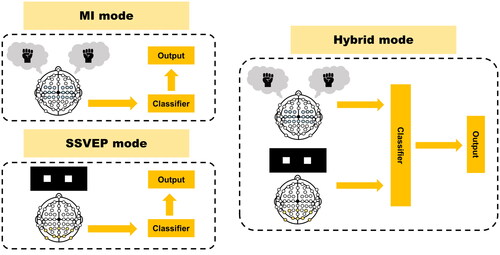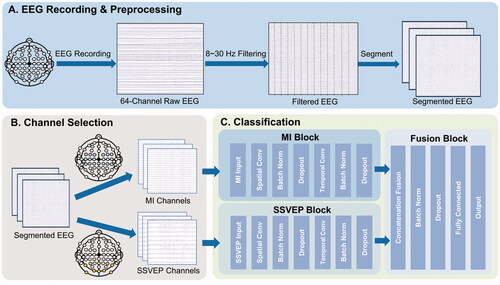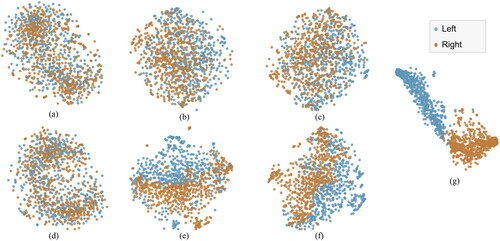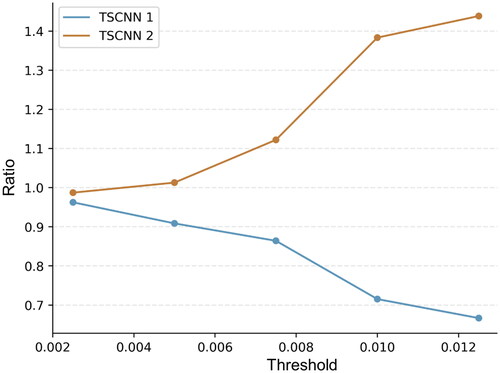Figures & data
Figure 1. Three modes of BCI system. (left top) MI mode, in which the subject imagines the left- or right-hand movement. (left bottom) SSVEP mode, in which the subject stares at the left or right flickering stimulus. (right) Hybrid mode, in which the MI and SSVEP are combined.

Figure 2. The TSCNN framework: (A) EEG Recording and preprocessing: the recorded EEG is filtered by bandpass filter, and then segmented into 4s length. (B) Channel selection: select the specific channels of MI and SSVEP. (C) Classification: classify the input EEG segments with TSCNN.

Table 1. Decoding performance (mean ± std) of three models.
Table 2. Comparison of mean ± standard deviation for decoding performances (mean ± std) in single MI, SSVEP, and hybrid systems.
Table 3. Decoding accuracy of TSCNN2 according to the fully connected number.
Table 4. Decoding accuracy of TSCNN2 according to the number of convolution kernels.
Figure 3. Impact of TSCNN architecture design choices on decoding accuracy in MI mode (left), SSVEP mode (middle), and hybrid mode (right) with different dropout rates. The horizontal axis is the different dropout rates, and the vertical axis is the decoding accuracy.

Figure 4. Impact of TSCNN architecture design choices on decoding accuracy in MI mode (left), SSVEP mode (middle), and hybrid mode (right) with different activations. The horizontal axis is the different dropout rates, and the vertical axis is the decoding accuracy.

Figure 5. Visualization of features for subjects 20–30 in 2 dimensions using t-SNE– – TSCNN2. (a)–(c) are the visualization results in MI block. (a) MI input features. (b) Features of spatial convolutional layer in MI block. (c) Features of the temporal convolutional layer in MI block. (d)-(e) are the visualization results in SSVEP block. (d) SSVEP input features. (e) Features of the spatial convolutional layer in SSVEP block. (f) Features of the temporal convolutional layer in SSVEP block. (g) Is the visualization result of fully-connected layer.

Figure 6. The ratio according to different thresholds. The thresholds are the weights of connections that are relatively high. The vertical axis is the ratio of the number of connections exceeding the threshold in TSCNN1 to the number in TSCNN2. The blue curve is the ratio in TSCNN1, and the red curve is the ratio in TSCNN2.

Table 5. The number of weights that are greater than the threshold.
